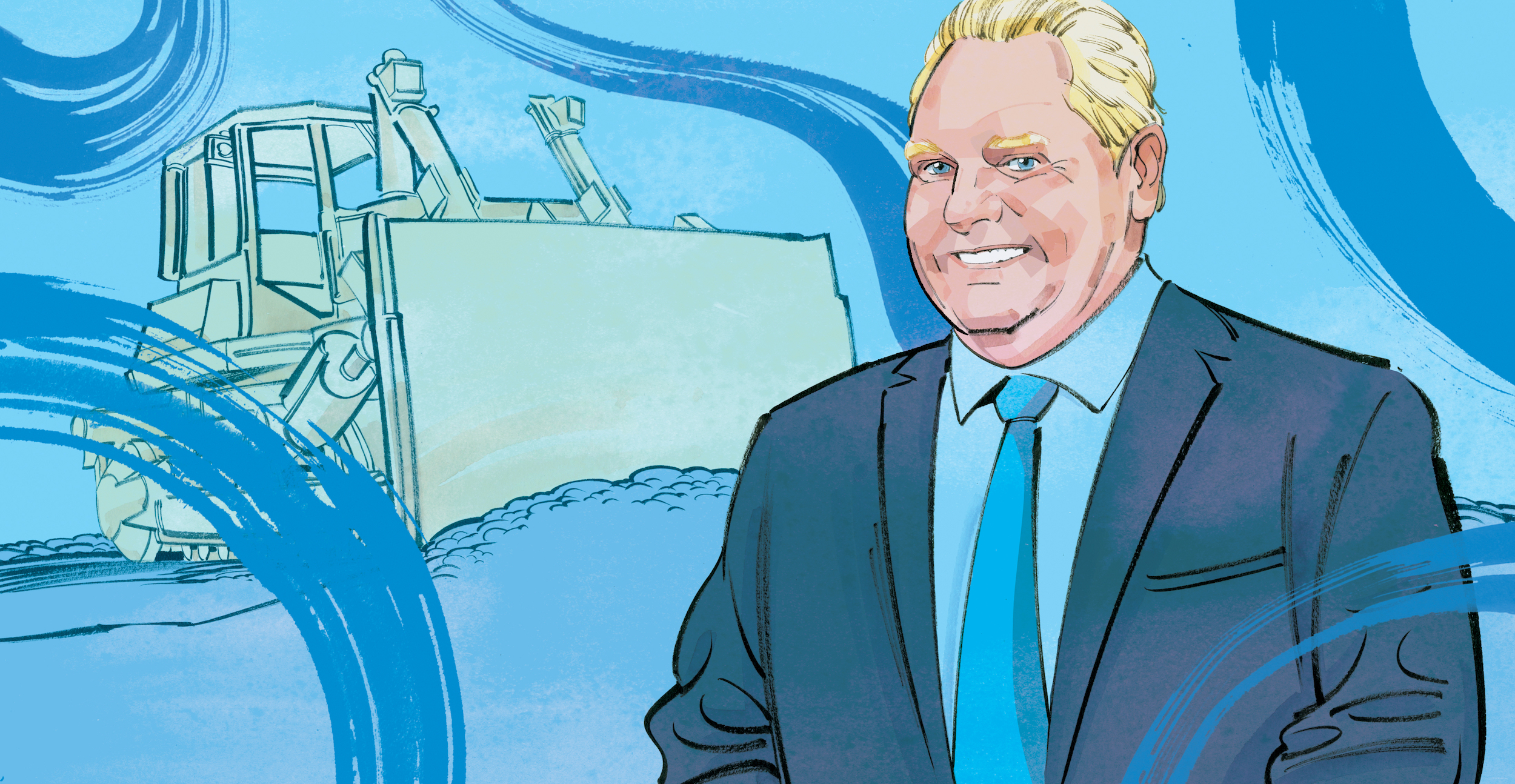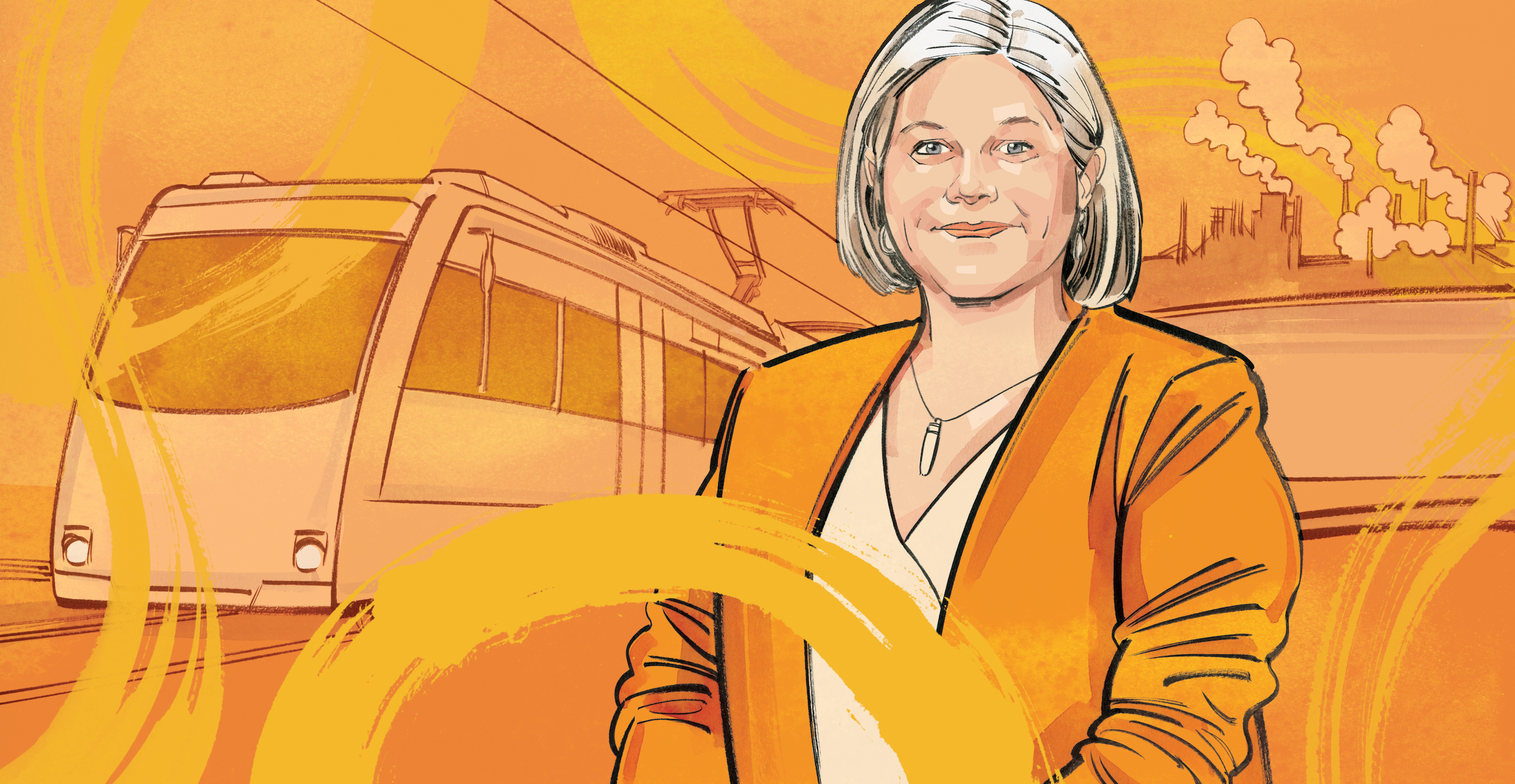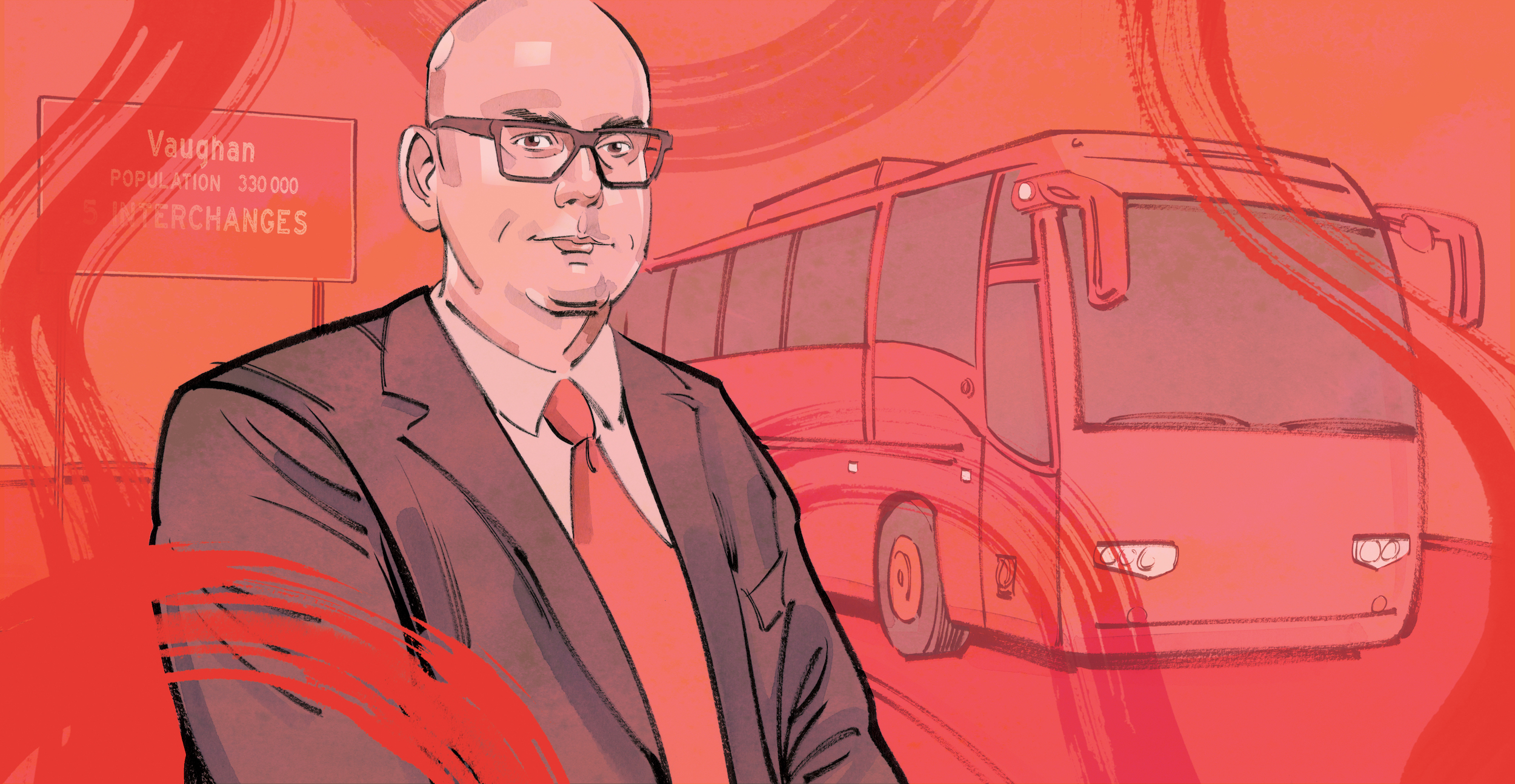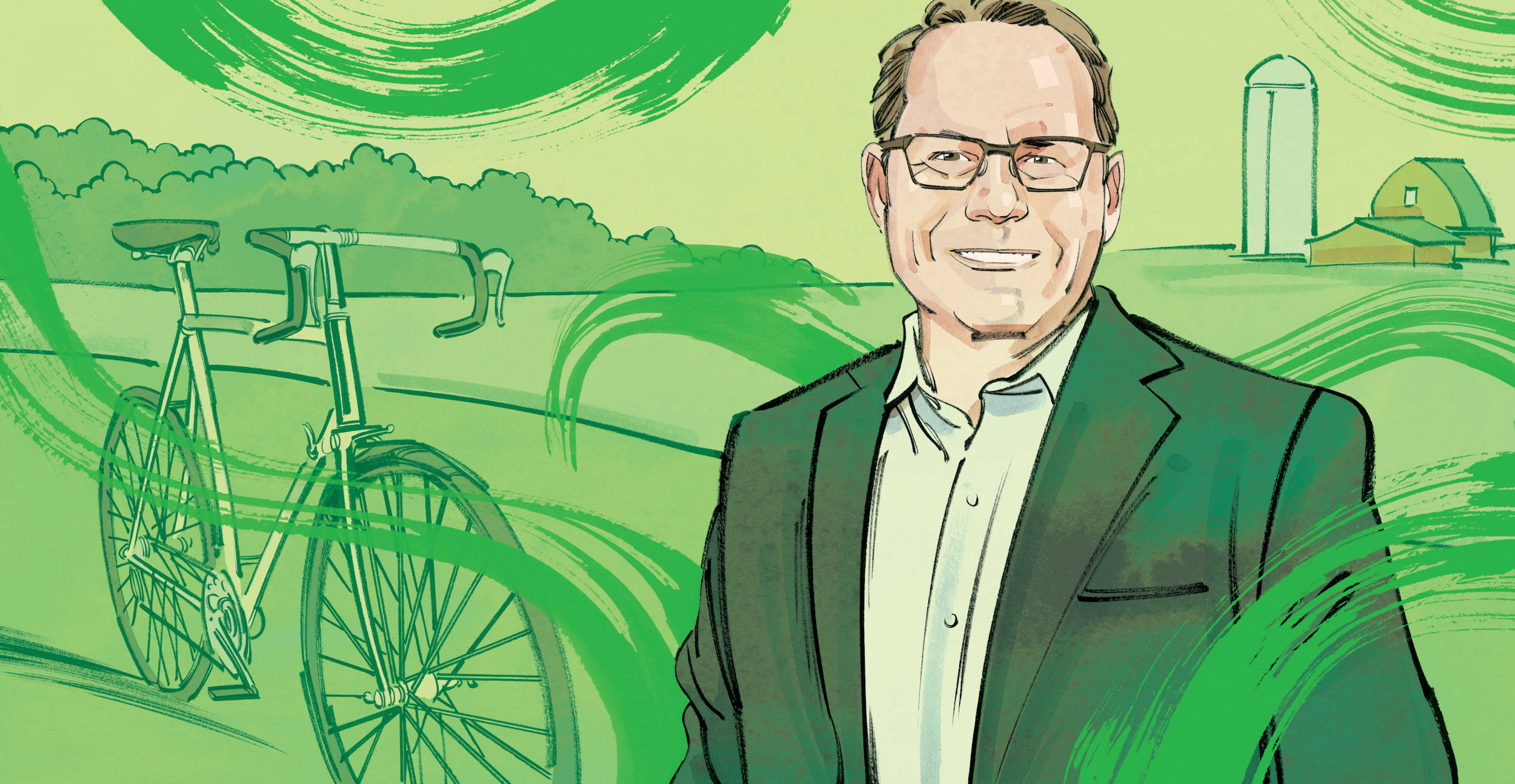
Two blank cheques: are Ontario and B.C. copying the homework?
Governments of the two provinces have eerily similar plans to give themselves new powers to...
On Saturday, May 21, a severe thunderstorm across southern Ontario, as well as parts of Quebec, killed at least 10 people, left hundreds of thousands of homes without power and uprooted trees across the province. Three Ontario cities and towns, Uxbridge, Clarence-Rockland and Peterborough, declared a state of emergency as a result of the damage left by tornado-like winds that reached over 130 km/h in some places, during a type of storm known to meteorologists as a derecho.
In the aftermath, provincial party leaders on the election trail made a number of statements about how the storm did or didn’t relate to climate change. They also made reference to the line items in their campaign platforms that could help Ontarians adapt to the climate crisis, or are meant to decrease emissions in order to stave off the worst effects of global warming.
But were these statements true? And if they were, is the policy idea fully formed in a way that could actually help Ontarians cope with the climate crisis? The Narwhal decided to fact check what incumbent Premier Doug Ford and the province’s opposition leaders said in the wake of the storm.
It would appear as though all party leaders have something in common when it comes to confronting the climate crisis — a lack of detailed, credible solutions. Here’s what we found.

On May 23, after surveying the damage in Uxbridge, Ford called the storm “a once-in-a-lifetime event.”
Ontario hasn’t had a derecho in a while, but it has had one in Ford’s lifetime: according to CBC, one cut across northern Ontario in 1999 on its way to Quebec. The most recent one was far more destructive, though, since the storm’s path went through the most populated part of Canada.
More broadly, “once-in-a-lifetime” events are happening more frequently in Ontario, including record-breaking heat waves and extreme flooding across the province. While it’s complicated to link climate change to specific weather events, many scientists have warned that a warming planet is vulnerable to an increase in natural disasters. Derecho events could become more common, and Ontario is definitely seeing an uptick in heavy rainfalls and flash floods.
The Ottawa region, for example, was hit hard this past weekend and has been struck by major flooding twice in recent years, in 2017 and 2019. Ford was premier during the 2019 floods, and visited the hurt communities — but earlier that same year, he cut funding for flood management programs in half.
The next day, on May 24, Ford held a press conference at a Brampton, Ont., Alstom plant that produces transit vehicles. “I believe in climate change, let’s make that clear,” Ford said. It was a rare instance of Ford speaking the phrase “climate change” in public — his government’s pre-election budget used it just once, in a description of a community infrastructure fund.
“We’re doing everything to prevent it by building electric vehicles, having investments into the battery plants,” Ford said. “We’re really focusing on everything we can.”
When asked by reporters why his party’s platform invested the least in climate resiliency and adaptation efforts to withstand extreme weather events, Ford “respectfully disagreed.”
Ontario is far from doing “everything” to fight climate change: Ford’s government has spent the last four years axing, cancelling or reframing at least 32 environment and energy policies, which are outlined in The Narwhal’s extensive, regularly updated list. It includes eliminating cap-and-trade carbon pricing and cancelling hundreds of renewable energy contracts. as well as electric vehicle incentives.
In 2021, the Ontario auditor-general found the Ford government was on track to achieve less than 20 per cent of its 2030 emissions-reductions goal.
The province’s future plans for environmental protection and climate mitigation fits in a bulletin of less than three pages that was published in April. It’s low on costing and other details, saying that Ontario “encourages businesses to invest in innovation, infrastructure, technology and workers” to meet a 2030 target of reducing annual carbon pollution by 30 per cent below 2005 levels. That’s well below the federal government’s target of 40 to 45 per cent reductions in that time period, and there’s no information on how it will be achieved.
Again on May 24, Ford said the previous Liberal government “ignored” transit, and claimed that the Progressive Conservatives had financed the largest subway expansion in the country.
While some routes and names have changed a little, the Progressive Conservatives have largely continued to pursue transit lines that were initiated by the previous Liberal government. As for the largest-in-the-country claim, Toronto and Montreal are the only Canadian cities with subways and, yes, the expansion to Toronto’s subway system is greater than anything underway in Montreal.
The other provincial parties have introduced similar plans to finance public transit, led by the Ontario Greens, who have promised to increase public transit spending by a whopping $1 billion.
When asked if his government should be doing more to mitigate climate change, Ford replied that 94 per cent of the province’s energy is from non-emitting sources. “Our goal is to hit 100 per cent,” he added, before speaking extensively about how investments in the auto sector can be done in a way that “creates jobs and be friendly to the environment.”
The incumbent premier once again highlighted the Progressive Conservative plan to invest in critical minerals to build “clean, clean, green cars.” Ford also mentioned his plan to shift to electric furnaces at two of Ontario’s biggest steel plants — the party’s largest source of projected emissions reduction.
We’d like to see the math — it’s hard to believe that the numbers in Ford’s pledge to power Ontario with 100 per cent non-emitting sources will add up. The province is scheduled to shut down the nuclear generating station in Pickering, Ont., which provides around 14 per cent of province-wide power, leaving a void that will almost certainly be filled by natural gas. Meanwhile, the Progressive Conservatives cancelled more than 750 clean energy projects early in their tenure.
As a result, emissions from Ontario’s grid are expected to increase by 400 per cent by 2040 – unless the government decides to shut down significant industries or turn the lights out for hundreds of thousands of people.
The Ford government’s platform is light on short-term changes to address environmental issues, and any climate benefits from its proposed mass shift to electric vehicles and changes in industry won’t be experienced in Ontario for many years to come, while the impacts of the climate emergency manifest severely in the present day. And when it comes to the critical minerals needed for electric vehicles, The Narwhal found that negotiations between the Ford government and the federal Liberals over funding to reach mineral deposits in the Ring of Fire have stalled — the idea is no closer to fruition than it was when the Progressive Conservatives were first elected.
Ford also said that his party’s proposal to spend $25 billion over 10 years to build and upgrade highways is part of a plan to address the climate crisis.
“One of the worst examples of pollution: go stand on the bridge of the 401 and watch bumper-to-bumper traffic,” Ford said. “You have to build roads and highways to get people out of the gridlock.”
Building more roads generally attracts more drivers, thus doing little to reduce emissions: it’s a well-studied phenomenon called “induced demand.” Eliminating road tolls, as Ford has done on two Durham Region highways, is also likely to increase congestion and the emissions that come with idling because of it.

On May 24, Ontario NDP leader Andrea Horwath said her party would create a disaster relief program to help residents affected by severe weather events such as last weekend’s derecho. She also said that a cap-and-trade carbon pricing system could fund this type of emergency relief. “That is going to help us finance the big, big changes that we need to make,” said Horwath, who held a virtual press conference after testing positive for COVID-19 last week.
The NDP didn’t provide any costing to support this proposal or elaborate on how Ontarians affected by climate disasters would access such a plan. The party platform does mention a climate disaster relief program, sort of: the short section on climate resilience mentions a future provincial action plan on funding, which would include access to affordable insurance.
The party also promises to implement a “climate stress test” on provincial infrastructure to identify necessary upgrades and maintenance. The plan does not specify how money would be allocated to restore or refurbish this infrastructure, or how much revenue the cap-and-trade system would generate. (Under the previous Liberal government, cap-and-trade was projected to bring in $3 billion.)
In response to the storm, Horwath also pledged to electrify all transit systems across the province.
This proposal isn’t included in the party’s platform, although there are pledges to expand train services. Last year, several NDP MPPs co-sponsored a bill asking the government to electrify and increase the service capacity of the UP Express, the train from Toronto’s Pearson airport to the downtown core. But electrifying Ontario’s train services is more complicated than it seems: it’s a promise the former Liberal government made way back in 2014, and the work underway now to tackle just GO train lines will take until 2032, at the earliest.

On Monday in storm-battered Ottawa, Liberal leader Steven Del Duca criticized Ford for not yet visiting a hard-hit community — by that afternoon, Ford was in Uxbridge. Del Duca said his party would create a $250 million annual fund to help communities become more resilient to extreme weather. The fund would also be used, he said, to restore and expand natural areas, like wetlands, and infrastructure such as green roofs.
“We specifically set aside [money] in our sustainability plan to deal with climate resilience to support conservation authorities or municipalities or both,” Del Duca said.
The details of the Liberal plans for climate resiliency and adaptation are, as with most of the other parties, vague. The party platform doesn’t mention where or how many wetlands would be restored or how many green roofs would be created, and also doesn’t include a timeline.

On May 24, Green leader Mike Schreiner criticized Ford’s climate record in the aftermath of the storm and reminded voters of his own party’s proposed $2 billion in annual funding to help municipalities build “climate ready” infrastructure. This is the largest pool of money dedicated to climate resiliency among Ontario’s political parties.
Details would be nice. It is unclear where the financing for this fund would come from. It is also unclear whether the funding would come with any requirements or evaluations to ensure municipalities spend the money responsibly.
Updated on May 25, 2022 at 5:00 p.m. ET: This story was updated to add that the city of Peterborough also declared a state of emergency.
Get the inside scoop on The Narwhal’s environment and climate reporting by signing up for our free newsletter. On a warm September evening nearly 15...
Continue reading
Governments of the two provinces have eerily similar plans to give themselves new powers to...

Katzie First Nation wants BC Hydro to let more water into the Fraser region's Alouette...

Premier David Eby says new legislation won’t degrade environmental protections or Indigenous Rights. Critics warn...
